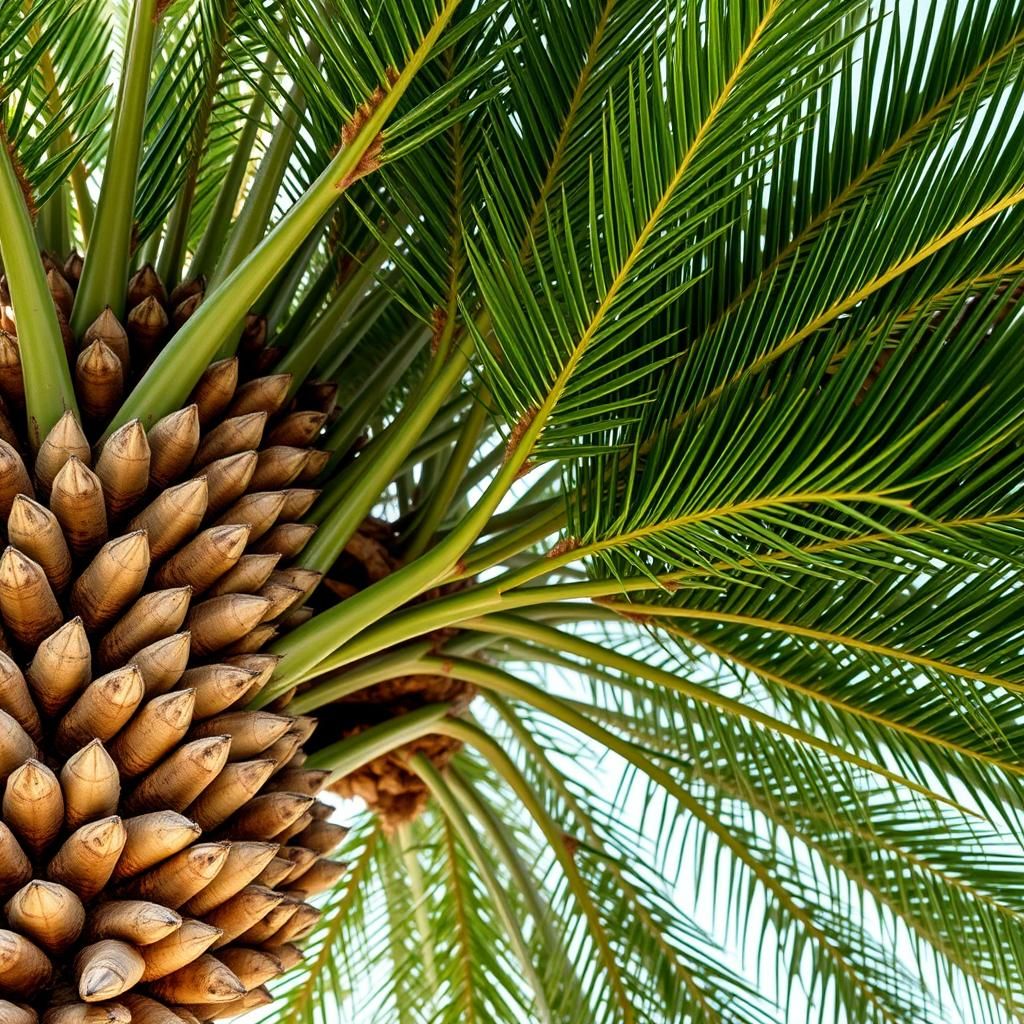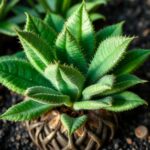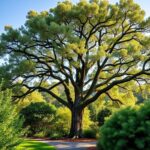Everything You Need to Know About the Palm Tree Washingtonia Filifera: Care, Features, and Benefits

The Washingtonia filifera, commonly known as the California fan palm, is a stunning addition to any landscape. Renowned for its iconic fan-shaped leaves and tall, slender trunk, this palm tree not only enhances the aesthetic appeal of gardens and parks but also offers numerous benefits. Understanding the specific care requirements, unique features, and environmental advantages of the Washingtonia filifera is essential for both novice and experienced gardeners. In this article, we will delve into everything you need to know about this remarkable species, ensuring that your palm thrives and contributes beauty to your outdoor space.
Understanding the Washingtonia Filifera Palm Tree
The Washingtonia filifera, commonly known as the California fan palm, is a striking species native to the deserts of southwestern United States and northern Mexico. This palm is known for its majestic fan-shaped leaves that form a dense crown atop a tall, robust trunk. Reaching heights of up to 75 feet, the Washingtonia filifera can thrive in various climates, particularly in arid regions, making it a popular ornamental choice in landscapes and gardens. Its durability, along with its ability to withstand highly variable environmental conditions, makes it an excellent choice for both residential and commercial landscaping designs.
Physical Characteristics
The Washingtonia filifera exhibits a tall, slender trunk that is often covered with the remnants of old leaf petioles. The crown typically consists of large, fan-shaped leaves that can grow up to 5 feet wide. The leaves are deeply lobed and are a vibrant green, contributing to the tree's aesthetic appeal. The trunk can reach a diameter of up to 2 feet, and the overall height can vary significantly based on environmental factors and care, making it one of the tallest palm trees found in the United States.
Habitat and Distribution
This palm tree is primarily found in the Sonoran Desert and Mohave Desert areas, with a natural range extending from southern California to Mexico. It thrives in oases and along riverbanks, where it can find sufficient moisture. The Washingtonia filifera has adapted to survive in low-water conditions and can tolerate occasional flooding, which makes it well-suited for areas with fluctuating water availability.
Cultural Significance
In California, the Washingtonia filifera holds cultural significance, as it is the only native palm species in the region and is often associated with the state's rich natural history. It is a distinctive element of the desert landscape and has been used in local landscaping design for decades. Additionally, these palms are often featured in California's parks and public spaces, highlighting the state's identity and celebrating its unique flora.
See also:
Care and Maintenance
Caring for a Washingtonia filifera palm involves ensuring it receives adequate water, especially during its establishment period, although it is drought-tolerant once mature. Regular pruning of dead or damaged fronds helps maintain its appearance and promotes healthy growth. Fertilization with a balanced palm fertilizer during the growing season can also enhance the tree's health and vibrancy, ensuring it remains a stunning component of any landscape.
Pests and Diseases
While Washingtonia filifera is generally resistant to many pests and diseases, it can occasionally be affected by issues such as scale insects, spider mites, and fungal infections. Regular monitoring and prompt action can help in managing these issues effectively. Maintaining proper care, including adequate drainage and air circulation around the palm, will also help reduce the risk of disease and ensure the longevity of this magnificent tree.
| Aspect | Details |
|---|---|
| Height | Up to 75 feet |
| Width of Leaves | Up to 5 feet |
| Native Regions | Southwestern United States, Northern Mexico |
| Water Requirements | Drought-tolerant once established |
| Cultural Significance | Symbol of California’s natural heritage |
Essential Growing Conditions for Washingtonia Filifera
The Washingtonia Filifera, commonly known as the desert fan palm, thrives in full sunlight and well-drained soil that mimics its natural desert habitat. It's crucial to ensure that the palm is not subjected to prolonged periods of standing water, as this can lead to root rot. When planning to cultivate this palm, consider its drought-tolerant nature, making it ideal for landscaping in arid regions. Regular watering during the establishment phase is essential, followed by infrequent watering to promote deep root growth. Understanding and replicating these crucial growing conditions will significantly impact the health and vigor of your Washingtonia Filifera.
Watering Requirements
Proper watering is vital for the Washingtonia Filifera, especially during its growth phase. Initially, it should be watered deeply to encourage strong root development. Once established, the palm is highly drought-tolerant and prefers infrequent watering. It's important to water only when the top inch of soil feels dry to the touch, thereby preventing over-saturation, which could lead to fungal problems.
Soil Composition and Quality
The ideal soil for the Washingtonia Filifera must be well-drained and composed of a mix of sand and loamy materials. This combination allows for excellent drainage while retaining some level of moisture for the roots. Avoid heavy clay soils that can lead to waterlogging. Incorporating organic matter can also help improve soil texture and nutrient levels, fostering a healthier environment for root growth.
See also:
Sunlight and Temperature Tolerance
Washingtonia Filifera requires full sunlight exposure to thrive, as it grows best in environments with warm to hot temperatures. This palm can tolerate temperatures as low as 20°F (-6°C) but flourishes in areas where the temperature has a consistent warm climate. Ensuring that the palm receives adequate sunlight will promote lush green fronds and overall vigorous growth.
Pest and Disease Management
Though generally resilient, Washingtonia Filifera can be susceptible to certain pests and diseases, including scale insects, spider mites, and fungal infections. Regular inspections will help in early detection, and maintaining proper environmental conditions can minimize the risk of these issues. If infestations occur, using insecticidal soaps or dedicated pest management strategies is crucial for the health of your palm.
Landscaping Benefits
In landscaping, the Washingtonia Filifera offers numerous benefits, including its striking appearance and ability to provide shade. Its tall stature and fan-like fronds can be used as a focal point in gardens or as part of a tropical landscape design. Additionally, its low maintenance needs and resilience in hot climates make it a popular choice for homeowners looking to enhance their outdoor spaces with a vibrant and attractive palm tree.
Questions from Our Readers
What is the native habitat of the Washingtonia filifera?
The Washingtonia filifera, also known as the California Fan Palm, is native to the desert regions of the southwestern United States, particularly in California, where it thrives in oases and along the banks of water sources.
How tall can Washingtonia filifera grow?
The California Fan Palm can reach heights of up to 75 feet (about 23 meters) in ideal conditions, making it one of the tallest palms native to North America, with a trunk diameter of around 2 feet (about 60 cm).
See also:
What are the main uses of Washingtonia filifera?
The Washingtonia filifera is commonly used for ornamental purposes in landscaping due to its striking appearance, but it also serves functions such as providing shade, environmental benefits, and even being a source of food for local wildlife.
Is Washingtonia filifera drought-tolerant?
Yes, the California Fan Palm is relatively drought-tolerant once established, as it has adapted to survive in arid conditions, but it still benefits from regular watering during prolonged dry periods to maintain its health and vigor.

If you want to read more articles like Everything You Need to Know About the Palm Tree Washingtonia Filifera: Care, Features, and Benefits, we recommend you check out our Landscaping category.
Leave a Reply
Related Articles